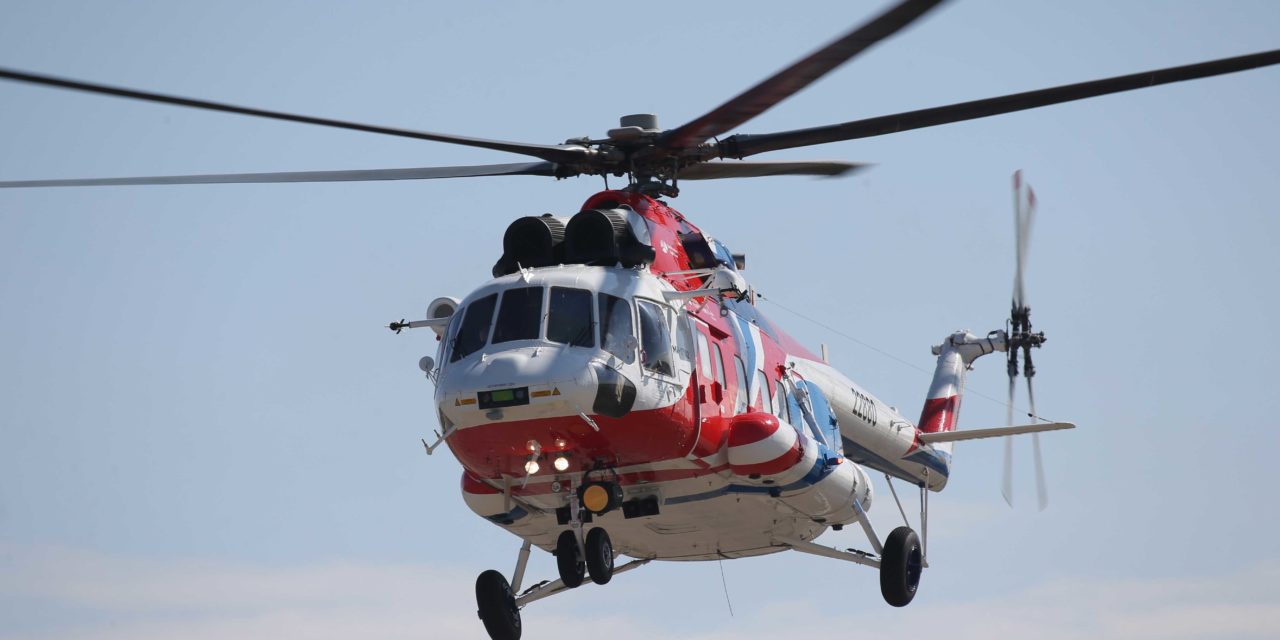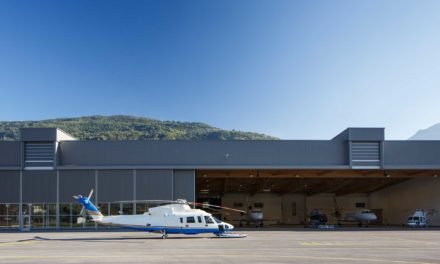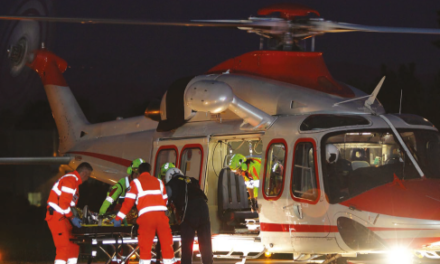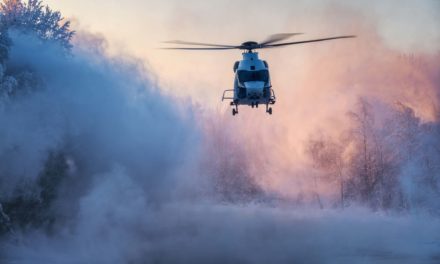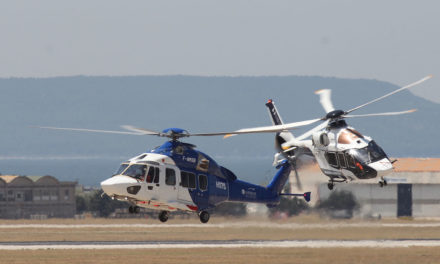Russian Helicopters will be present at the next Paris Air Show with its latest addition, the Ansat. This was an opportunity for Helicopter Indsutry to discuss with its manager, Andrey Boginskiy, the progress of this Russian giant’s market.
- What types of Russian Helicopters aircrafts are currently in production, and how many factories produce helicopters in Russia today?
The Holding Company’s enterprises produce both civil and military rotorcraft that are demonstrating excellent performance during operation on all continents of the globe. No doubt, the most popular Russian helicopter is Mi-8/17. Today, Russian Helicopters Holding Company produces this machine in various modifications, the latest of them being Mi-171A2. This is the new-generation rotorcraft; practically all systems and assemblies have been replaced. In particular, the helicopter is now fitted with the upgraded rotor system, more powerful VK-2500 enginesand state-of-the-art avionics. As a result we have managed not only to improve flight performance but to significantly increase flight safety. The onboard avionics suite constructed according to the “glass cockpit” principle decreased crew workload considerably allowing the reductionof the number of crew members down to 2.
Another bestseller operated by nearly 20 countries is Ka-32A11BC utility helicopter designed as per the coaxial main rotor scheme. It is employed efficiently in fire-fighting and rescue missions. This year we have presented to our Russian and foreign partners the project of its deep modernization involving the avionics’ update, replacement of engines with more powerful ones and replacement of water tank with a more capacious one with digital control.
In the heavy rotorcraft segment the indisputable leader is our Mi-26 helicopter capable of transporting up to 20 tons of payload. For the Russian military we have designed Mi-26T2B which sports leading-edge avionics, top-notch onboard defense suite and shock-absorbing crew seats.
Taking into consideration the global trends in rotorcraft demand we place special emphasis on the light-class helicopters in which we also have something to boast. At the Paris Air Show we are showcasing light utility helicopter Ansat created by the engineering team of Kazan Helicopters. It features the largest cabin in its class (capable of transporting up to 8 persons) and is produced in a range of modifications from VIP cabin to flying ambulance. In November and December 2018, together with Mi-171A2, Ansat participated in a South Asia Heli Tour and flew over 5,000 km. Our helicopters set off after the closing of the aerospace exhibition Airshow China 2018 in Zhuhai and visited Vietnam, Cambodia, Thailand and Malaysia. Besides display flights, everywhere we made presentations for local operators and invariably encountered the interest of potential customers. As a result we have signed a contract for delivery of 20 Ansat helicopters for the Emergency Medicine Association of China and continue a number of negotiations with our partners in Southeast Asia.
Another light utility machine is Ka-226T with coaxial main rotor scheme. It features maximal takeoff weight of 3.6 tons and is capable of transporting up to 1 ton of payload. The main distinctive feature of the helicopter is its modular design. As you know, Russian and India are currently implementing an ambitious project of localizing the production of Ka-226T. The intergovernmental agreement signed envisages the delivery of 60 helicopters from Russia and the assembly of another 140 machines in the territory of India with a gradual step-up in the level of localization.
Today we are continuing to expand our model range and make it our mission to be present in all “weight categories”. Our rotorcraft in the so-called intermediate segment are getting closer to serial production stage: Ka-62 with take-off weight of nearly 7 tons and Mi-38 which occupies a niche between the medium Mi-8/17 and heavy Mi-26. These machines are not yet serially delivered but we are already registering interest on the part of Russian and foreign customers. Both of the rotorcraft will be presented at MAKS International Aviation and Space Salon this august, and I should mention that it would be the first time we display a prototype of Ka-62 at the airshow.
With regard to our production capabilities, it is worth noting that the Holding Company comprises over 20 enterprises all over the country: from Kaliningrad to Vladivostok. Among them are the OEMs, component manufacturing plants and aircraft repair facilities. Such an extensive structure allows us not only to deliver helicopters but to render full life-cycle support ranging from spare parts supply to overhaul.
2.
Since our last interview (July, 2015), what big decisions has been made by Russian Helicopters about its commercial policy worldwide?
Our main tasks remain unchanged: increasing order book, ramping up production and also developing the system of global after-sales support. However, the completion of rearmament cycles in Russia and in some other countries teamed up with the global contraction in demand for medium and heavy-lift helicopters forced us to revise our strategy and to concentrate on the production of civil rotorcraft and access to new markets.
The first steps in this direction have been made; we managed to raise the share of civil products from 5% in 2014 to nearly 40% in 2018. Such growth was achieved due to the domestic demand thanks to the implementation of an ambitious program of developing EMS aviation in Russia. Further down the line we expect to increase civil-purpose rotorcraft supplies due to exports; we had been actively working on it during the South Asia Heli Tour and now we are planning to carry on at the Paris Air Show.
3. How many engine manufacturers currently provide engines to Russian Helicopters and what types of engines?
As of today, United Engine Corporation (UEC) is the key manufacturer and supplier of various types of power plants for our helicopters.
The production of the new turboshaft engines VK-2500 was set up in Russia to replace TV-3-117 on the helicopters of the following types: Mi-8/17, Mi-24/35, Ka-32, Mi-28N and others. VK-2500 engine features three modifications with the take-off power ranging from 2,000 to 2,400 shp. This power plant boasts digital automatic control system instead of an analogue one, cutting-edge sensors, running time and control meter and new materials. Also the Russian enterprises that make part of the UEC produce TV7-117V turboshaft engines for Mi-38 helicopters.
We are cooperating quite successfully with the foreign manufacturers of power plants for civil-purpose rotorcraft. In particular, Ansat helicopter is fitted with PW207K engines by Pratt&Whitney Canada. Right now we are conducting joint work with our Canadian colleagues to validate the Ansat type certificate in China. The engine is already certified, so we are feeling optimistic.
Besides, we are having mutually beneficial partnership relations with the French Safran Group cooperating on the two types of helicopter at the same time: Ka-226T and Ka-62. The first rotorcraft is already in serial production and the second one is at the stage of flight trials, which directly precedes serial production.
4. What helicopter programme requires your full attention now?
All the programs are equally important for us. Since I have already covered our main model range I would like to tell you more about the advanced projects of the Holding Company.
In 2018, at the International helicopter industry exhibition HeliRussia in Moscow we have premiered our new project VRT500. It is a light single-engine helicopter with coaxial rotor scheme and take-off weight of 1,600 kg. This helicopter will feature the most spacious transport and cargo cabin in its class with a total capacity of up to 5 persons and will be equipped with the state-of-the interactive avionics suite. VRT500 will be capable of achieving a speed of up to 250 km/h, a range of up to 860 km and a payload of up to 730 kg. The production launch is scheduled for the end of 2021. Around 1,000 units will be produced by 2035.
Speaking about creating the prospective aircraft, this process is closely linked to the development of the new technical groundwork. As of today the Russian Helicopters Holding Company pursues such developments in a number of trends. The first one: increasing the safety of flights. The second one: development of aircraft “intelligence”. The third trend: considerable increase in helicopter speed due to the implementation of various layout schemes, cabin designs, modernization of engines and other activities. It is important to highlight that I am referring to the drastic speed growth and not to its gradual increase by a few km/h for the existing rotorcraft models. The fourth trend: development of composite production of helicopter parts and airframe components. This will significantly reduce the machine’s structural weight and speed up the production process.
5. Can one consider that Russian Helicopters struggles to conquer markets outside its historical areas of influence worldwide?
According to our data more than 100 countries worldwide are operating over eight thousand Soviet and Russian-made helicopters. Russian Helicopters Holding Company takes up 90% of the Russian rotorcraft market but our share of global sales is not that massive.
No doubt, we strive to expand our presence abroad and the new markets are of great interest to us, because this directly affects the volume of products sold. Today we are witnessing advanced growth of the developing markets of the countries of Asia-Pacific region, China and Latin America. The new segments are being developed, mostly concerning helicopters with take-off weight of 7-10 tons; also the implementation of a number of new-gen helicopter programs is well underway.
According to our estimates, in 2017 the volume of global civil rotorcraft market totaled 4.2 bln USD (920 helicopters). By 2025 we expect to achieve an annual sales volume exceeding 200 civil-purpose rotorcraft. The promising market for us includes 90 countries, its volume amounts to 2.4 bln USD.
6. Which regions of the world, from a commercial point of view, arouse your interest?
I will repeat myself and state that they are Southeast Asia, China, India and Latin America. These markets have great potential. We can see a demand for both medium and light helicopters, and Ansat here is an excellent option.
At the same time, we focus not only on the sales of new rotorcraft but also on timely and proper maintenance. Over 20 service centers were established and authorized in South East Asia, CIS countries, the Middle East and Latin America to maintain helicopter operation abroad.
We develop several large-scale projects for establishing service centers in China where one of the most numerous fleets of Russian-made rotorcraft is being operated. Our partner service center in the Republic of Korea is running successfully. We also look into similar projects in Indonesia and Myanmar.
As for support service, we consider African countries as a distant perspective. In this region we have 20-30 Soviet and Russian-made helicopters in operation in each country. Taking into account tendencies of this region and development and increase of the role of African countries in global politics, our analysis shows that there is a latent demand for following decades.
7 . What is Russian Helicopters preparing in the perspective of the 2019 Paris Airshow? Will Russian Helicopters aircrafts be exhibited there, including in flight?
This year we are showcasing actual helicopters at Le Bourget for the first time since 2013. The European premiere of Ansat will take place at the Paris Air Show, it will participate both in flight and static displays. We are bringing two rotorcraft, one with a VIP cabin and the other one in EMS configuration.
The participants and guests of the Show will be able to take a close look at Ansat interior at the static display. It will feature the “glass cockpit” and a new medical-module made in Austria that complies with all international standards for EMS aviation. Both helicopters acquired new livery symbolizing special beauty, lightness and controllability of Ansat in the air. Also it is symbolic that the rotorcraft painting scheme features the colors of the Russian and French national flags.
This upcoming European premiere is very important for us. Showcasing the Russian helicopter at Le Bourget allows us to demonstrate our expertise and the fruits of a years-long effort to launch the new light helicopter capable of competing with the universally acknowledged leaders in this segment.
However, there is the other side of the question: we are sure that the civil aircraft-building industry must unite all countries and boost their development and prosperity. Our participation in the Paris Air Show will be dedicated to this idea as well. Every day Russian-made helicopters lift off and save the lives of people, help to fight fires, monitor environmental situations, deliver food and medical supplies and other articles of daily necessity to the hard-to-reach areas. We are willing to ensure the performance of these most complicated tasks jointly with our foreign partners.
8 . How many international fairs is Russian Helicopters participating in every year worldwide?
Every year Russian Helicopters Holding Company takes part in about 10 international exhibitions. For example, this yearwe have already participated in Aero India at Bangalore, LIMA in Malaysia, FAMEX in Mexico, SITDEF in Peru. Besides the airshow at Le Bourget we are looking forward to the Russian International military-technical forum Army-2019, the major Russian MAKS International Aviation and Space Salon, fairs in China, Korea and Dubai Air Show.
9 . What characterizes the Paris Airshow according to you?
Being one of the key and most prestigious fairs, Paris Air Show is like a Geneva International Motor Show for the aviation industry. This airshow always surprises the exhibitors and visitors with its caliber, technologies and major deals. We are hoping to be able to surprise our customers too by appearing in a new light: as a manufacturer of the modern and competitive civil rotorcraft.
The next important step is Moscow International Aviation and Space Salon MAKS 2019, which I invite you and all our partners to attend. We will present our full range of Russian-made civil rotorcrafts including some great novelties, so I will be delighted see you in Moscow this august!

